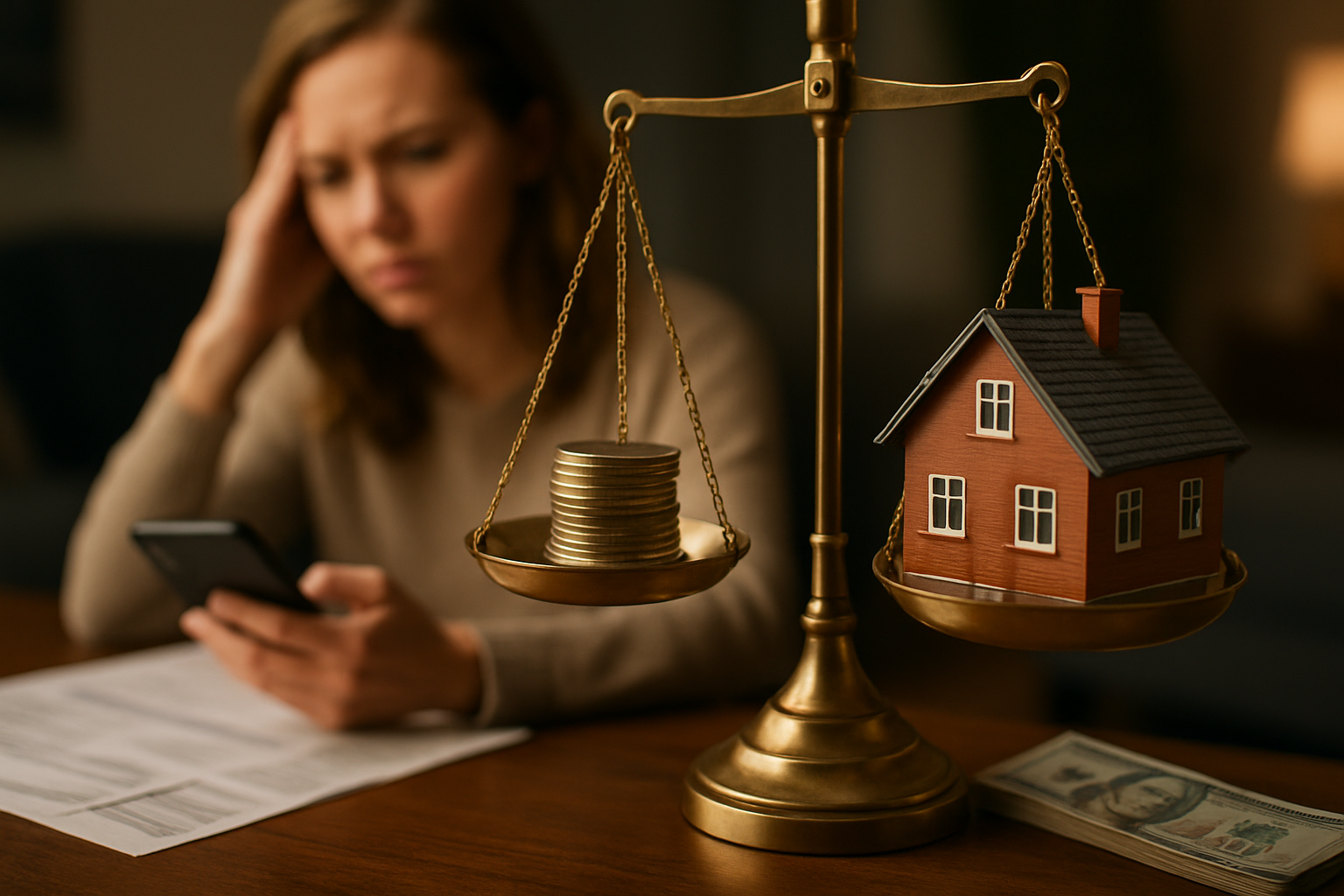Understanding “Good Debt” vs. “Bad Debt” - And Why It Matters
Debt is a complex financial concept that often carries negative connotations. However, not all debt is created equal. Understanding the difference between "good debt" and "bad debt" is crucial for making informed financial decisions and maintaining overall financial health. This article will explore the characteristics of both types of debt, their potential impacts on your financial future, and how to navigate borrowing wisely.

What is considered “good debt”?
Good debt is generally defined as borrowing that has the potential to increase your net worth or generate long-term income. These investments typically appreciate in value over time or provide opportunities for personal and financial growth. Some common examples of good debt include:
-
Mortgages: Buying a home can be a solid long-term investment, as property values often increase over time.
-
Student loans: Higher education can lead to better job prospects and increased earning potential.
-
Business loans: Borrowing to start or expand a business can generate future income and create wealth.
-
Home improvement loans: Certain renovations can increase your property’s value and improve your quality of life.
While these types of debt can be beneficial, it’s important to note that they still require careful consideration and responsible management.
How can “bad debt” impact your financial health?
Bad debt, on the other hand, is borrowing that doesn’t contribute to your long-term financial growth or stability. This type of debt often comes with high-interest rates and is used to purchase items that quickly lose value or don’t generate income. Some examples of bad debt include:
-
Credit card balances: High-interest credit card debt can quickly accumulate and become challenging to repay.
-
Payday loans: These short-term loans often come with exorbitant interest rates and fees.
-
Car loans for luxury vehicles: While transportation is necessary, expensive cars depreciate rapidly and can strain your finances.
-
Personal loans for non-essential purchases: Borrowing for vacations or expensive gadgets can lead to financial stress without long-term benefits.
Accumulating bad debt can negatively impact your credit score, limit your ability to save and invest, and create a cycle of financial stress that’s difficult to break.
How to make smart borrowing decisions
Making informed choices about when and how to borrow is essential for maintaining good financial health. Here are some strategies to help you make smart borrowing decisions:
-
Evaluate the purpose: Before taking on debt, consider whether the purchase or investment will contribute to your long-term financial well-being.
-
Compare interest rates: Shop around for the best rates and terms, especially for significant loans like mortgages or business financing.
-
Create a repayment plan: Ensure you have a realistic strategy for repaying the debt before borrowing.
-
Consider alternatives: Explore options like saving, negotiating, or finding more affordable alternatives before resorting to debt.
-
Maintain an emergency fund: Having savings can help you avoid relying on high-interest debt for unexpected expenses.
What role does debt play in building credit?
Responsible use of debt can play a crucial role in building and maintaining a good credit score. Your credit history demonstrates your ability to manage borrowed money and repay it on time. Here’s how different types of debt can impact your credit:
-
Installment loans: Mortgages, auto loans, and personal loans can help diversify your credit mix.
-
Credit cards: Using credit cards responsibly by keeping balances low and making timely payments can boost your credit score.
-
Student loans: Consistently repaying student loans can establish a positive payment history.
However, it’s important to remember that taking on debt solely to build credit is not advisable. Focus on responsible borrowing and repayment habits instead.
How can you transition from bad debt to good debt?
If you find yourself burdened with bad debt, there are strategies to help you transition towards a healthier financial situation:
-
Prioritize high-interest debt: Focus on paying off credit cards and other high-interest loans first.
-
Consider debt consolidation: Combining multiple debts into a single, lower-interest loan can simplify repayment and reduce overall costs.
-
Explore balance transfer options: Moving high-interest credit card balances to a card with a 0% introductory APR can provide temporary relief and help you pay down debt faster.
-
Create a budget: Identify areas where you can reduce spending and allocate more funds towards debt repayment.
-
Seek professional advice: Consider consulting a financial advisor or credit counselor for personalized guidance on managing and reducing debt.
| Debt Type | Interest Rate Range | Potential Benefits | Considerations |
|---|---|---|---|
| Mortgage | 3% - 7% | Build equity, potential appreciation | Long-term commitment, additional costs |
| Student Loan | 3% - 12% | Increased earning potential | Can be difficult to discharge |
| Credit Card | 15% - 25%+ | Short-term flexibility | High interest can lead to cycle of debt |
| Personal Loan | 6% - 36% | Consolidation, fixed payments | Rates vary widely based on credit score |
Prices, rates, or cost estimates mentioned in this article are based on the latest available information but may change over time. Independent research is advised before making financial decisions.
Understanding the distinction between good debt and bad debt is crucial for making sound financial decisions. While some forms of borrowing can contribute to long-term financial growth and stability, others can lead to a cycle of financial stress. By carefully evaluating your borrowing choices, managing debt responsibly, and focusing on investments that increase your net worth or earning potential, you can use debt as a tool to build a stronger financial future rather than a burden that holds you back.




